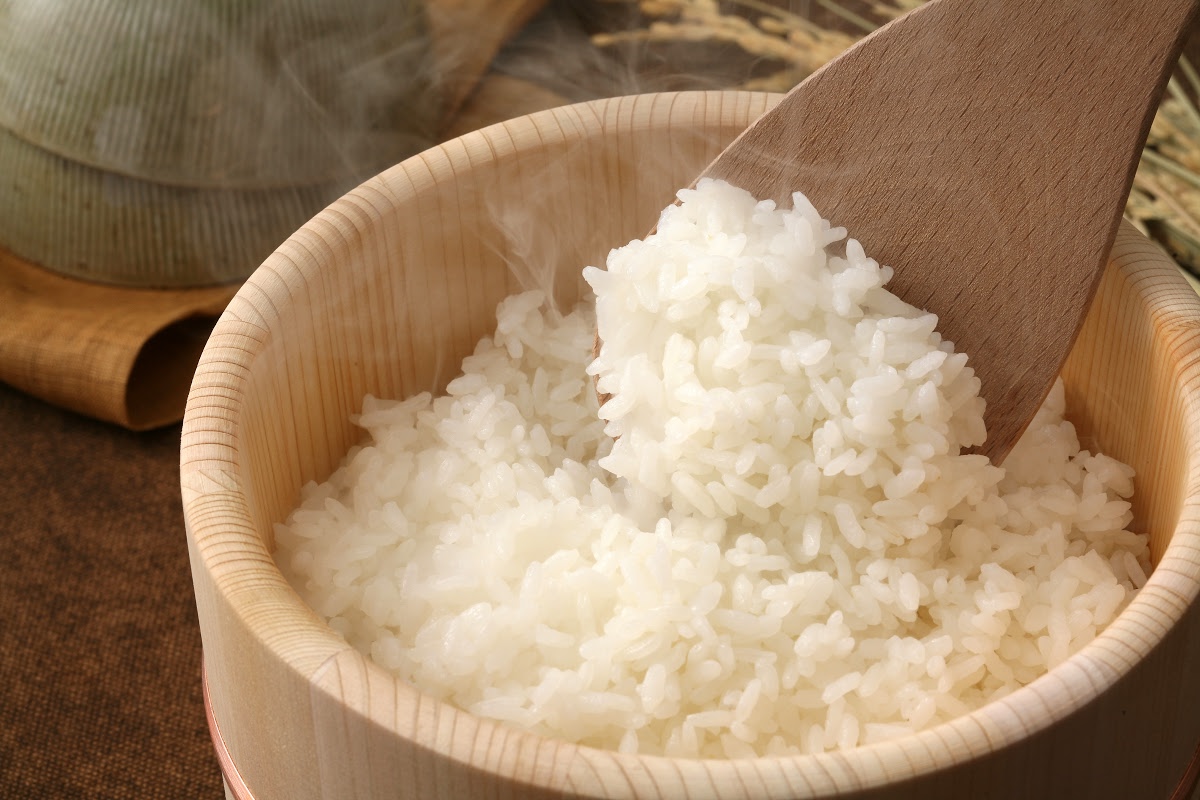
When it comes to rice, Koshihikari is a name that stands out among the rest. Known for its exceptional taste, texture, and fragrance, Koshihikari rice is a beloved staple in Japanese cuisine. Whether you’re a fan of sushi, rice bowls, or simply enjoy a delicious side of rice with your meals, Koshihikari rice is sure to satisfy your taste buds.
In this article, we will explore 12 fascinating facts about Koshihikari rice. From its origins and cultivation methods to its nutritional benefits and culinary uses, you’ll learn everything you need to know about this premium variety of rice. So, grab a bowl of rice and get ready to delve into the world of Koshihikari, the rice that has captured the hearts of food lovers around the globe.
Key Takeaways:
- Koshihikari Rice, originating from Japan, is a sticky, aromatic, and nutrition-packed grain loved by chefs worldwide for its superior taste and versatility in various dishes.
- With its premium quality and rising popularity, Koshihikari Rice is not only a staple in Japanese cuisine but also a sought-after ingredient in international dishes, showcasing its adaptability and unique flavor.
Origin
Koshihikari Rice, a short-grain variety, originates from Japan and is highly sought after for its exceptional quality.
Aromatic Delight
One of the key features of Koshihikari Rice is its delightful aroma, which fills the air while it cooks, making it even more enticing to eat.
Superior Taste
Koshihikari Rice is renowned for its superior taste, with a delicate yet rich flavor that enhances any dish it is served with.
Sticky Texture
The high starch content in Koshihikari Rice gives it a sticky texture when cooked, making it perfect for sushi and other traditional Japanese dishes.
Nutritional Value
Koshihikari Rice is not only delicious but also packed with essential nutrients such as carbohydrates, proteins, and dietary fiber, providing a healthy and fulfilling meal.
Cultivation Process
Koshihikari Rice requires meticulous cultivation, including specific soil conditions, temperature control, and careful water management, to ensure its premium quality.
Preferred by Chefs
Renowned chefs around the world consider Koshihikari Rice as their preferred choice for its exceptional taste, texture, and versatility in various culinary creations.
Rising Popularity
Due to its remarkable attributes, Koshihikari Rice has gained immense popularity globally and is now being cultivated in other countries, providing people with a taste of its excellence.
Perfect Companion for Dishes
From sushi to rice bowls and stir-fries, Koshihikari Rice complements a wide variety of dishes, adding an extra layer of flavor and satisfaction to each bite.
Premium Price
Because of its superior quality and demanding cultivation process, Koshihikari Rice often comes with a higher price tag compared to other rice varieties, signifying its value.
Exported Worldwide
Koshihikari Rice is not only enjoyed in Japan but is also exported worldwide, allowing people from different cultures to experience its unique taste and culinary benefits.
The Versatile Grain
Beyond traditional Japanese cuisine, Koshihikari Rice can be used in various international dishes, showcasing its versatility and adaptability to different culinary styles.
Conclusion
Koshihikari rice is not just a staple in Japanese cuisine, but it has also gained popularity worldwide for its unique characteristics and nutritional benefits. From its distinct aroma and flavor to its sticky and fluffy texture, this premium rice variety is truly a delight for rice lovers. Whether you enjoy it on its own, in sushi, or as a side dish, Koshihikari rice offers a culinary experience like no other.
With its high quality and meticulous cultivation process, it’s no wonder Koshihikari rice has become highly sought after. Its superior taste and versatility make it a top choice for chefs and food enthusiasts alike. So the next time you’re in the mood for something special, consider adding Koshihikari rice to your menu and savor the sensational flavors it has to offer.
FAQs
1. What is Koshihikari rice?
Koshihikari rice is a premium variety of short-grain rice that originated in Japan. It is known for its unique aroma, excellent taste, and sticky texture.
2. What makes Koshihikari rice special?
Koshihikari rice is special due to its vibrant and distinctive flavor profile, which is described as sweet, nutty, and slightly buttery. It also has a soft and fluffy texture, making it perfect for sushi, rice bowls, and various Japanese dishes.
3. How is Koshihikari rice different from other rice varieties?
Koshihikari rice stands out from other rice varieties due to its superior taste and texture. It has a higher starch content, resulting in a stickier consistency when cooked. Additionally, it is often grown using traditional cultivation methods, ensuring optimal flavor and quality.
4. Can Koshihikari rice be cooked in a rice cooker?
Yes, Koshihikari rice can be easily cooked in a rice cooker. Simply follow the instructions provided by the manufacturer or use the standard rice-to-water ratio of 1:1.25 for a fluffy and flavorful outcome.
5. Is Koshihikari rice gluten-free?
Yes, Koshihikari rice is naturally gluten-free, making it suitable for individuals with gluten sensitivities or those following a gluten-free diet.
6. Where can I purchase Koshihikari rice?
Koshihikari rice is available in many Asian grocery stores and specialty food markets. You can also find it online through various retailers and e-commerce platforms.
7. Can Koshihikari rice be used in other cuisines?
While Koshihikari rice is commonly used in Japanese cuisine, its versatility allows it to be incorporated into other dishes as well. It can be used as a substitute for other short-grain rice varieties in recipes from different cuisines.
8. Does Koshihikari rice require any special cooking techniques?
Cooking Koshihikari rice is similar to cooking other rice varieties. However, to fully enjoy its delicate flavors and texture, it’s recommended to rinse the rice thoroughly before cooking and to follow the specific cooking instructions provided with the packaging.
If you're curious about other fascinating rice varieties, be sure to explore our article on Arborio, a short-grain rice that's perfect for creamy risottos. For those interested in the origins of Koshihikari, don't miss our piece on Joetsu, the Niigata Prefecture city where this beloved grain was first cultivated. And if you're a sushi lover, our article on sushi rice nutrition facts will help you make informed choices when indulging in your favorite rolls.
Was this page helpful?
Our commitment to delivering trustworthy and engaging content is at the heart of what we do. Each fact on our site is contributed by real users like you, bringing a wealth of diverse insights and information. To ensure the highest standards of accuracy and reliability, our dedicated editors meticulously review each submission. This process guarantees that the facts we share are not only fascinating but also credible. Trust in our commitment to quality and authenticity as you explore and learn with us.


